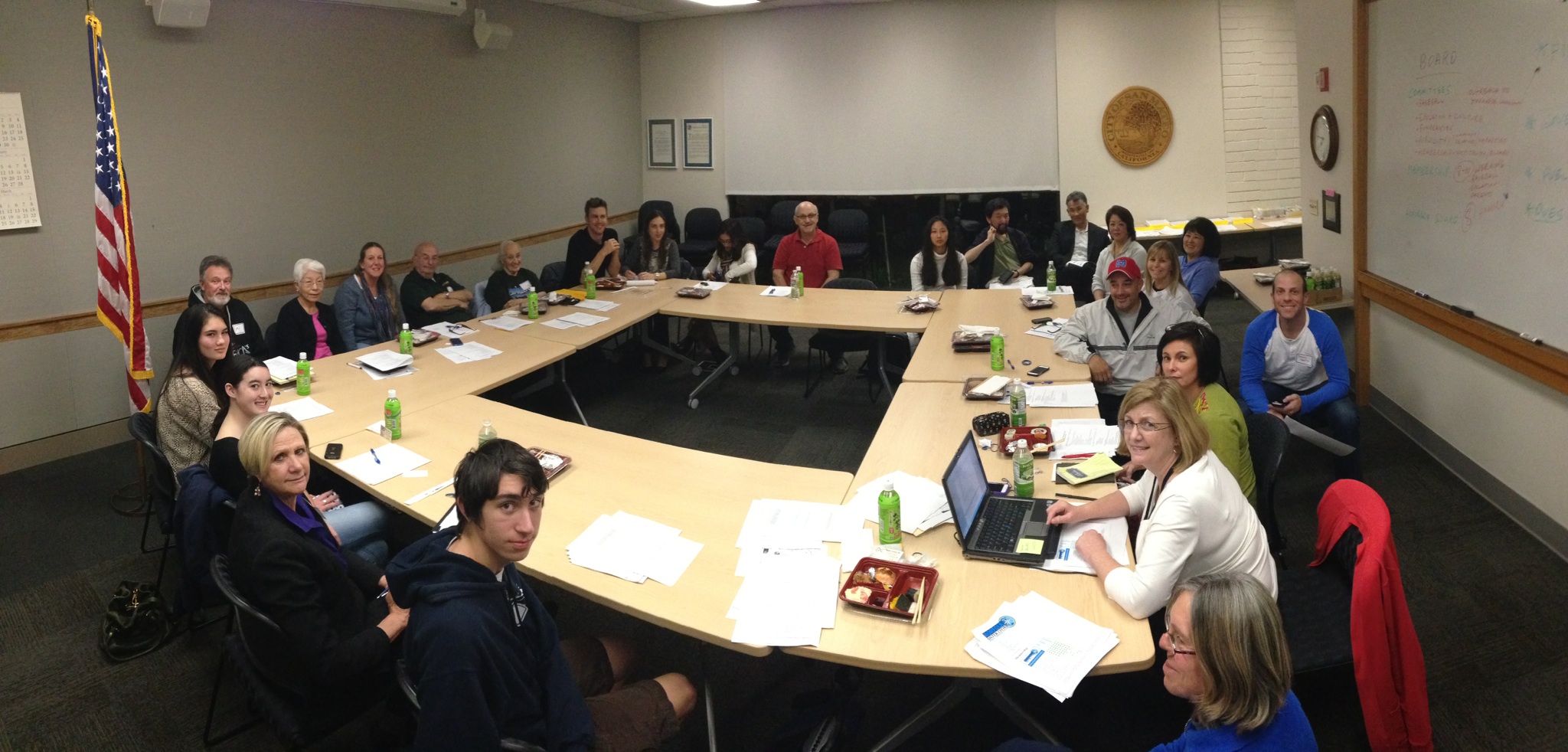
Junior Guy Geva and other attendees at the Jan. 16 meeting.
On Jan. 14 and 16, the San Mateo Sister City Association held a summit to discuss the continuing development of the Sister City Program, a partnership between San Mateo and Toyonaka, a town in the Osaka prefecture of Japan.
This partnership was formed in 1963 as part of the Sister City Program developed by President Eisenhower in the 1950s. The project was created with hopes of repairing the post-World War II animosity between the United States and Japan.
“We’re supposed to promote communication, exchanges, [and] look out for the welfare of each other,” says San Mateo Mayor Robert Ross. “I think those are the three key elements [of the sister city relationship].”
At the summit, which was held at San Mateo City Hall, representatives from the Sister City Association, the San Mateo City Council and members of the community made a list of challenges the Sister City Association faces and strategized on what can be done to overcome such challenges. Raising awareness of the Sister City Association through a membership program, local schools, and the Japanese community, as well as utilizing effective fundraising techniques were among the topics discussed on Jan. 14.
The Jan. 16 meeting focused mainly on how the board of the San Mateo Sister City Association could be improved. “Our board structure needs to change,” says City Councilmember David Lim. “I think we need to expand our board to at least 10. I would say that we double the board to at least 16.”
The summit attendees brainstormed who they thought could be possible working board members and honorary board members, including Aragon Principal Pat Kurtz.
The San Mateo-Toyonaka sister city relationship celebrated its 50th anniversary in the summer of 2013 with a visit from a delegation of city officials, student ambassadors, and the boys baseball team from Toyonaka.
A main part of this relationship is the baseball exchange program. “There are only a handful of sister city associations that can say that they’ve had as consistent a program as the baseball program,” says Lim. “So I think it’s something to be applauded and it’s something to keep going.”
Every two years, a select boys baseball team from either San Mateo or Toyonaka visits the other city to play baseball and participate in a cultural exchange.
“We built [this relationship] on baseball a long time ago … and that’s really been the glue that has held everything together,” says Ross.
Another major part of the sister city bond is the student exchange program. High school students are selected to go to Japan as ambassadors and take part in many of the decisions made by the Sister City Association. Junior Guy Geva was selected last year to be a student host ambassador for the 50th anniversary celebration.
Geva says, “I’ve never really done anything quite like this, and it gives me a lot of exposure to things that I wouldn’t be able to experience otherwise, working with people from city hall and meeting these people from a country 5,000 miles away. It’s just really unique and I do enjoy being part of the decision process.”
Geva worked for several months in preparation for the 50th anniversary celebration, which took place in August 2013. He was on the committee that helped organize and plan the events, which included several baseball games in Central Park. “There was a big dinner with speeches, and there were also some smaller events,” Geva adds. “[We] went to the Japanese tea garden at Central Park because that tea garden is something that Toyonaka has donated to San Mateo, so we thought that would be a nice place to hold an event.”
Citizens also see many benefits to the program. Lim says, “[The Sister City Association] is one of the most important organizations for the city of San Mateo.” Through the baseball program, the Sister City Association works directly with the youth of San Mateo and encourages intercultural relationships.
The San Mateo Sister City Association hopes to continue bringing its work into the community. Its next focus is to set up a membership program for people interested in the San Mateo-Toyonaka sister city relationship.
